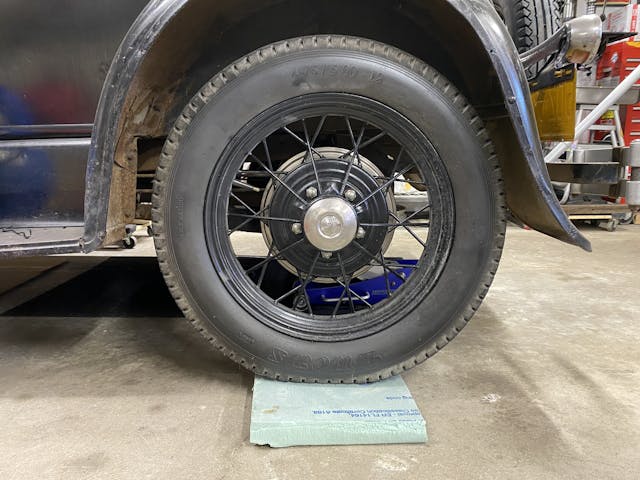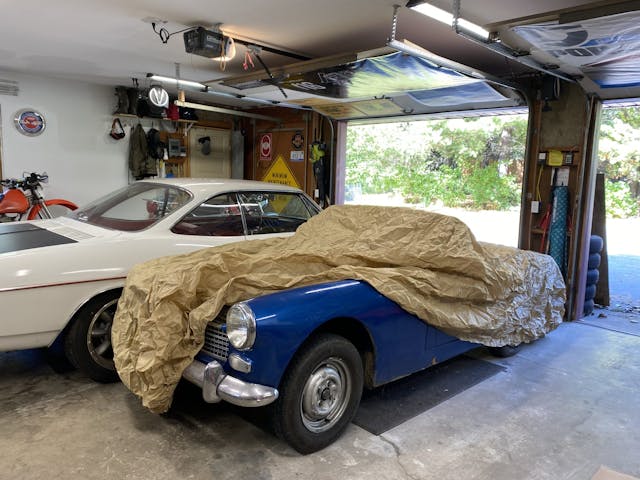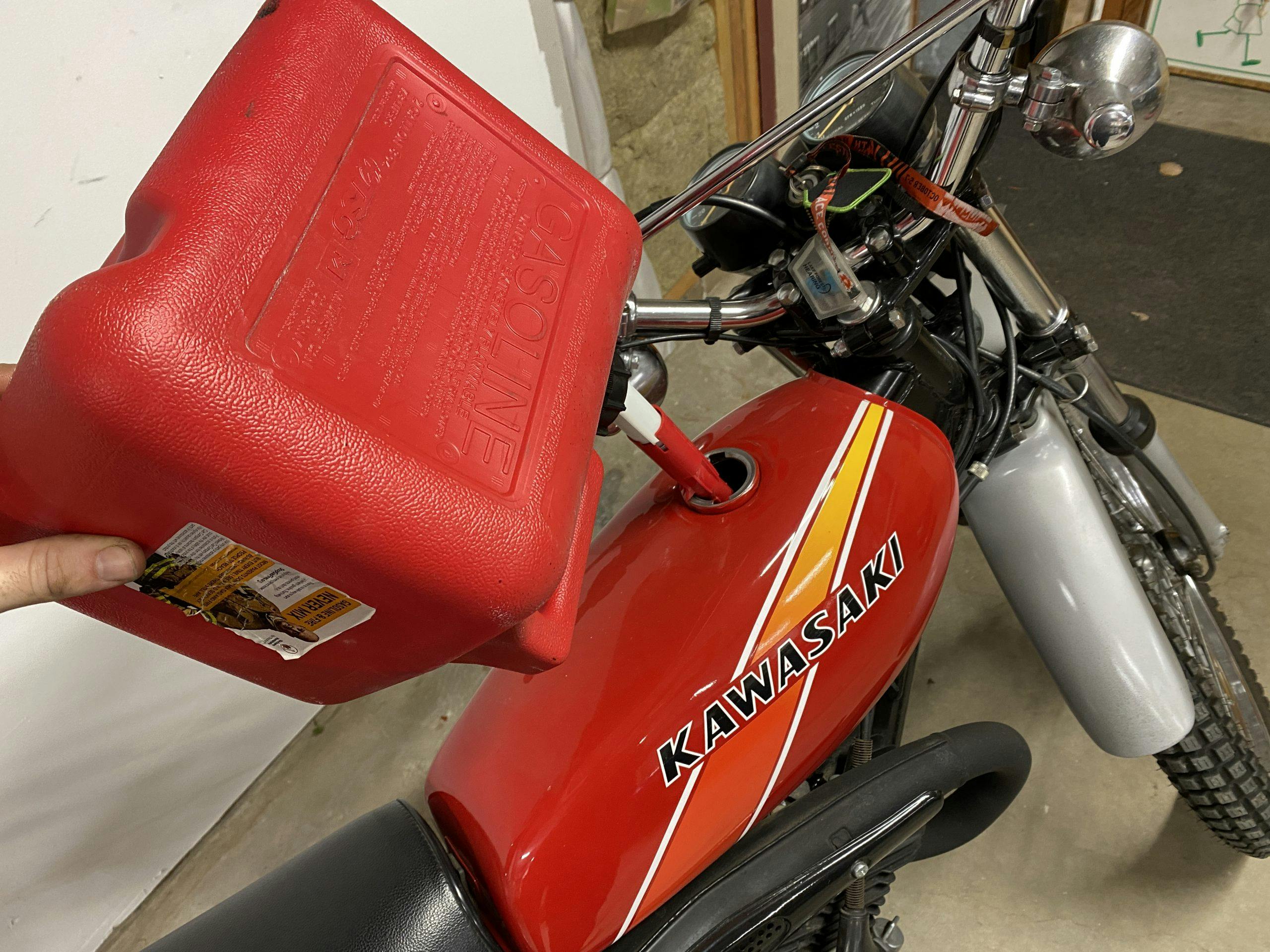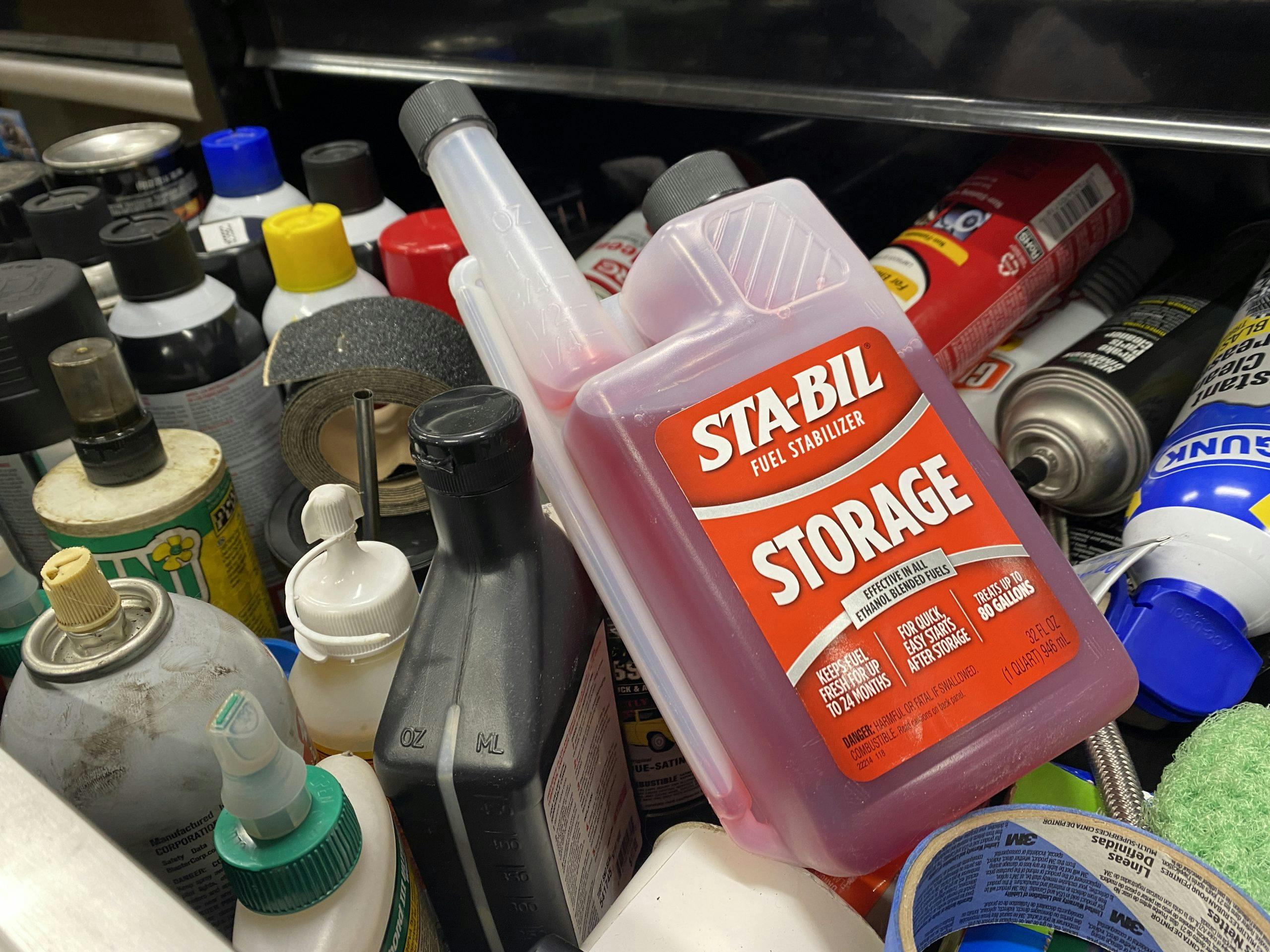4 critical steps for winter storage prep
Whether we like it or not, the changing of the seasons is upon us, and that means some of us are mentally preparing for the saddest day of the year—when we tuck our vintage toys into seasonal storage. It can be a rough day for a bunch of reasons, but a little stress and care right now can make for an extra delightful spring when you take your car out for that first drive.
Top up (two ways)
Storing with non-ethanol fuel is best, but not everyone has access to it, or it may come at enough of a premium that it’s not in the cards right now. Regardless of fuel type, fill the tank to the top and add an appropriate fuel stabilizer. Most vintage fuel tanks are steel and thus are very susceptible to rust, which can flake off and fill your fuel system with debris. Holy headache. With the tank topped off, there is no room for air and thus rust is kept at bay. Once you have some stabilizer in the tank, be sure to run the car for 10-15 minutes to make sure that it circulates through the entire fuel system.
The other “top” to think about is the convertible top. While you might never put the top for the summer, it is in your best interest to store a car with the top up so that it does not shrink or otherwise get damaged from long-term storage while being folded up. This is especially important for plastic rear windows that will lock into a shape when held in a particular way for too long. Replacing tops is not fun, and you aren’t driving anyway, so why not use it as the time to get your top back into shape?
Insulate your tires

Tires are made for driving, not for parking. That’s why long-term storage is likely to cause flat spots or dry-rotting of the rubber rings we need so dearly. There are appropriate products on the market that can help, but it’s also just as easy to pick up some insulation foam board and cut a few squares that fit under your tires. This will form a cradle for the tire and also keep the dirt or concrete under the car from sucking the moisture out of the rubber, making them last longer. If you want to go an extra step in moisture management, lay down a tarp or painter’s plastic sheet under the car to prevent the cool chassis from condensing any moisture that might rise up from the ground.
Cover up

If your storage spot has windows or is open on one side, be sure to utilize a good quality car cover. UV degradation can happen fast when a car is parked in one spot and the sunlight only hits a specific spot day after day. Your seats, paint, and trim will thank you for covering up, as it will also keep scratches and dust off your precious vintage ride. Speaking of dust, be sure that the car is clean before you cover it. Really clean. A cover can grind any dirt and debris left on the car into your delicate paint. Also, remember that covers don’t do much to protect from dents, so make sure your car does not become a shelf or leaning place for other things in the garage.
Fresh fluids

At a minimum, your car should get fresh oil and a coolant check. Oil traps combustion byproducts, and if left in the crankcase to sit all winter you can end up with corrosion or deposits that require serious work to remove. An oil change right before storage is cheap insurance. Coolant needs to be properly mixed for the temperatures the car will see in storage so it doesn’t freeze. Freezing liquids can exert tons of force—enough to literally split your engine block in two. You can be sure with a simple $3 tester, or if you’re really unsure and the coolant looks or smells dirty, a flush and fill could be your best option.
While under the hood looking at fluids, take a moment to inspect your brake fluid, as it can absorb moisture too. Flush with fresh fluid if the reservoir is anything but a nice light amber color.
Good luck. Spring will be here before you know it. (We hope.)





Attended several Trade Shows talking to Fuel Experts that claim
“Modern Fuels have VERY low life – as the fines evaporate off in just a few months. They recommend storing with MINIMUM Fuel in the tank – THEN put 5 gallons of FRESH fuel in the Spring when restarting the car.
Vinegar is the best neutralizer for moth balls.
We keep the radio on in our garages. Those pesky mice don’t come around.
I live in southern California. We don’t store our cars, we drive them…………..all the time 🙂
I am jealous!
If you have an air-cooled engine like in an early VW or Porsche, be careful about using dryer sheets in the engine compartment to discourage mice. If you forget about them or use more than one sheet and don’t get them all out, you can guess where they go when you start the engine. Yes, the fan pulls them right in. Ask me how I know.
I vote to sell it then let someone else prep it for winter and buy a new ride in the spring:)
All uncessary for a winter storage except trickle charger. If parking outside covered, good luck.
If the top is to be folded, make sure that it goes down in stages to allow the straightening out of all the wrinkles. My one-owner 1978 Fiat Spider has it’s original top (with plastic rear window) that is in essentially brand new condition. It has been folded for 42 years. I recently had the plastic window buffed out to remove some light paint mist from a bad bodyshop repair in the 1980s. It always had a terry cloth or felt cloth cover when folded so that the plastic window never rubbed agasint itself when folded as the car flxed and bounced when driving. When it was a daily driver in the 70s, 80s and early 90s here in SoCal, the car ran with a Parrish Plastics hard top in the winter and top down for the entire summer. Taking time to fold and raise these tops can make them last a long time.
I’m not sure but are you saying it’s better to store it with the top folded down? I think it’s much better to have the top up if it’s going to be sitting over the winter.
I have been doing this for years with narry a problem.
Have a fairly bright light on 24/7 along with one of those cheap 20″ box fans you can pick up from a variety of places for less than $20.00 running on high 24/7.
The critters don’t like the light or air movement. Also helps keep the moisture from collecting under the vehicle.
Having had a fan overheat and smolder in our bedroom one time, thankfully waking me up with the smell, I would not leave any fan running where I could not see (or smell) it.
A better way to keep mice out of cars is to use a product like “Fresh Cab”, which uses balsam oil in little bags. I have been using it for several years in my cars, and only once have I found a mouse intrusion in a car so-protected (perhaps that mouse had no sense of smell).
I’ve got three cats that I let into the garage regularly. The only mice I see are DOA and left as presents.
Terriers, as the Air Force discovered on bases back in the 1950s, are vastly better ratters. Unlike cats, they do not kill songbirds and like all dogs, thrive on a vegan diet.
A $100 ozone generator will get rid of the mothball smell and any other persistent odors – not just in your car but in your home as well. Just be sure to follow the safety instructions. To control moisture, I keep a large 500 gram (1.1 lb) desiccant bag in a glass bowl in my cars when they are not being used. When the bag weighs 650 grams it can be recharged in the oven or microwave.
Have stored my 1954 Triumph in our unheated attached garage for over twenty years. Had problems with mice the first year until I found that my wife had several bags of bird feed in same garage. Moved bird feed into a thirty gallon aluminum can (with lid of course). No problems since. Discover the food attraction for the mice and they will disappear.
A federally mandated change in moth ball formulas a few years ago has rendered them almost useless in keeping away critters.
Also please no antifreeze. If ingested it will cause death to pets in a matter of hours.
I keep a box fan running to keep air circulating in an unheated 24 x 30 pole barn.
When I lived in Chicago I raised the tire pressure to about 10 under maximum, plugged the battery to a trickle charger and started the car every week till it was warmed up at idle. Then when the road salt was washed away in the spring I finally took it out for a drive.